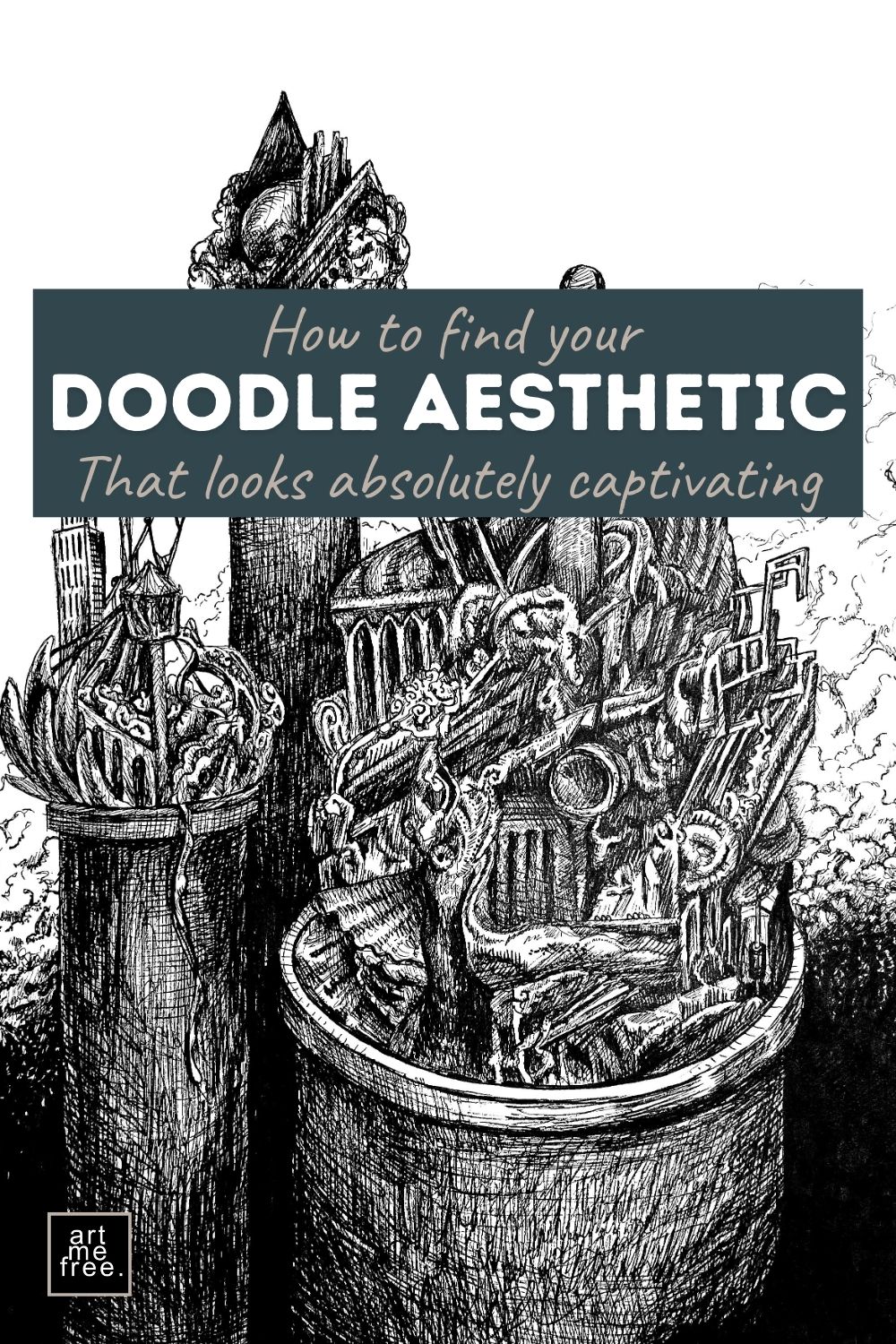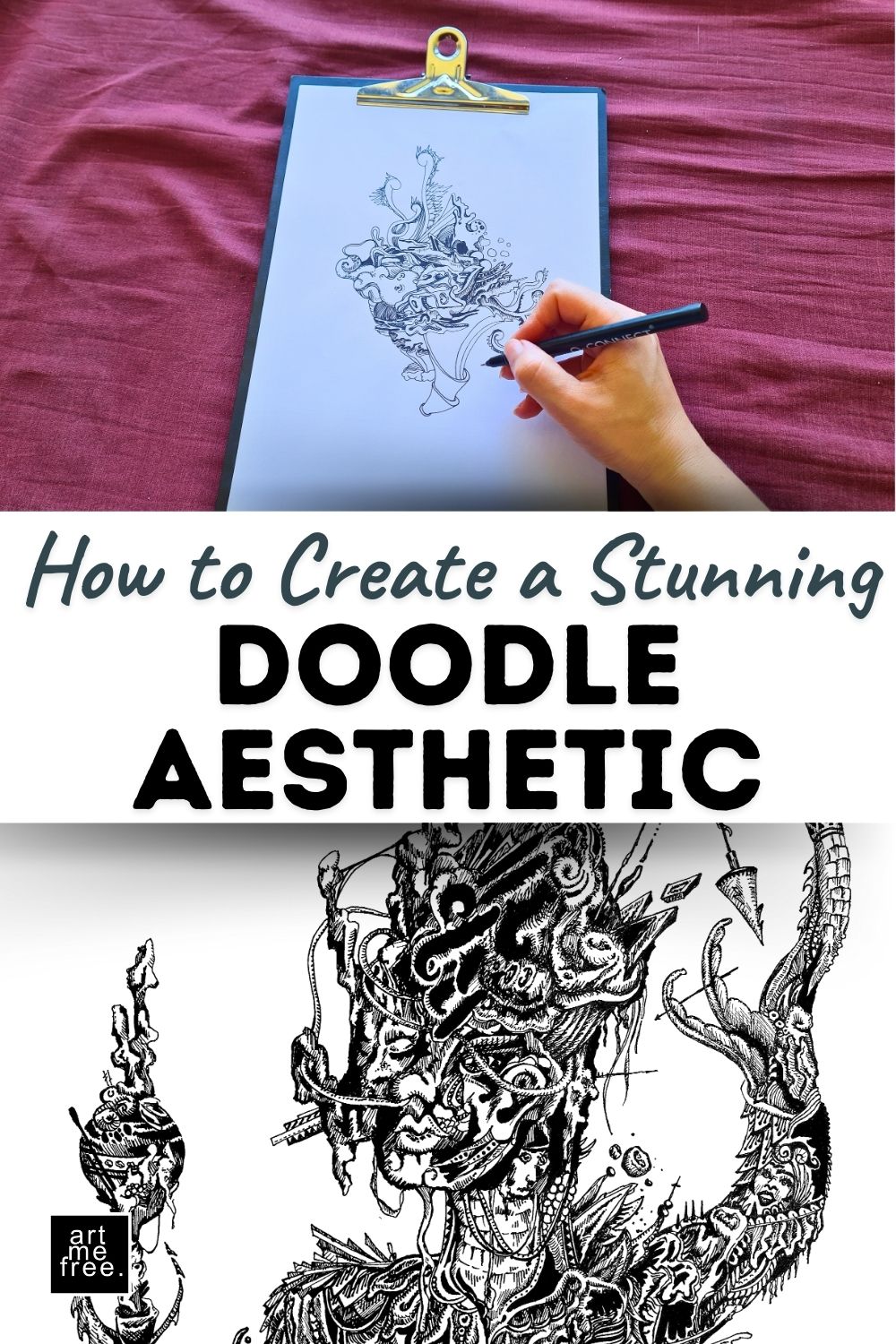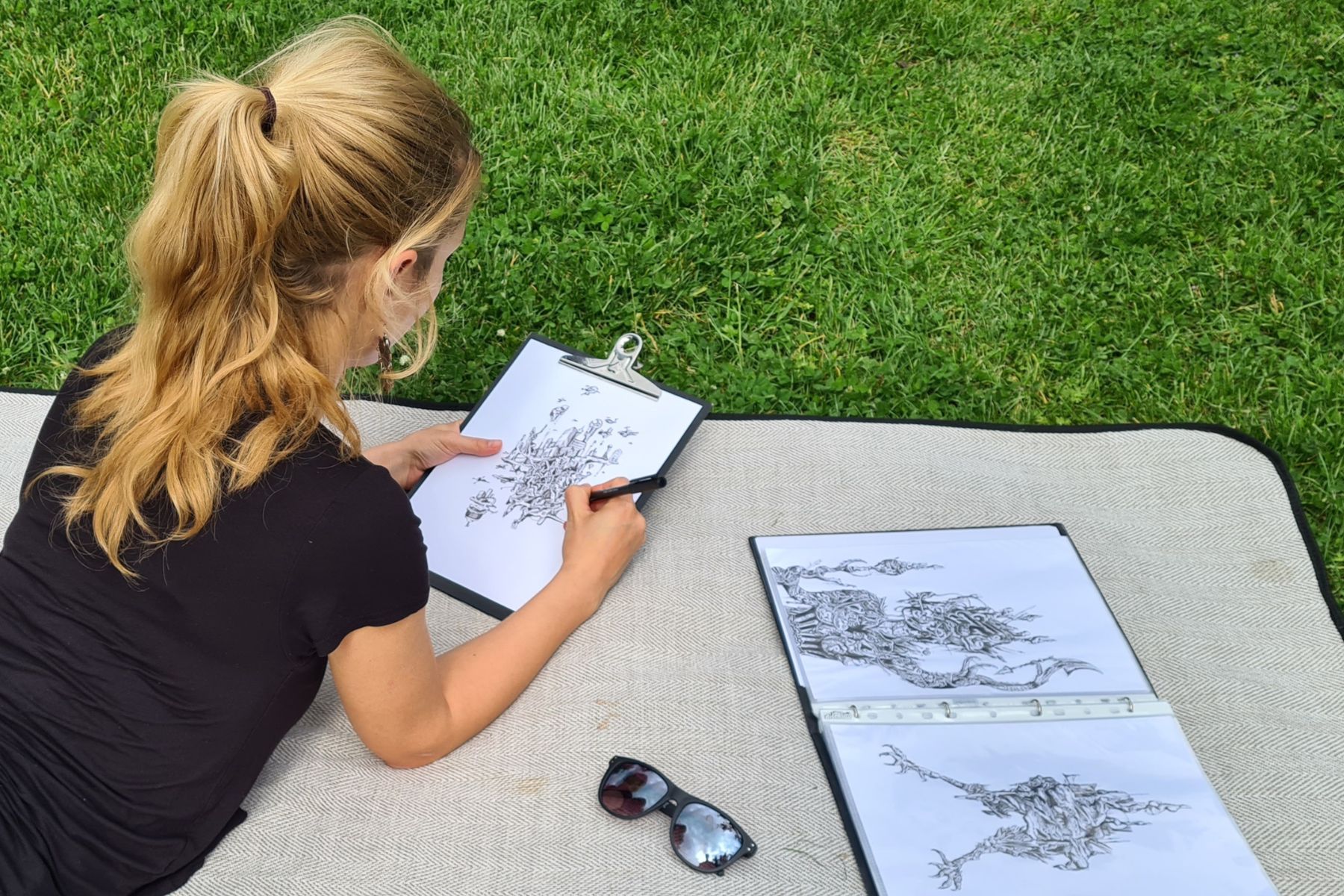
A doodle aesthetic is the overall style or visual mood that your doodles create. It includes what you draw, how you draw it, and the energy your sketches give off. Some artists lean toward clean, simple visuals, while others (like myself with artmefree) are drawn to wild, layered, and complex compositions. There’s no right or wrong—it’s about finding what feels exciting and natural for you.
Pay attention to the things you already enjoy sketching. Maybe it’s plants, geometric shapes, or abstract lines. If you’re not actively drawing yet, look at the shapes you doodle during meetings, calls, or classes – those marks you make absentmindedly on paper corners, notebook margins, or sticky notes. That’s often where your natural style is already showing up.
Here are some doodles that people are often naturally drawn to. Which of these apply to you?
Repeating geometric shapes like circles, triangles, or grids
Letters, numbers, or abstract typography
Swirls, arrows, zigzags, or checkerboard patterns
Tiny objects like keys, stars, or plants
Random shapes that evolve as you go
Mechanical or architectural forms with structured lines
Organic shapes inspired by nature or movement
Let those scribbles guide your aesthetic. They’re raw, honest, and uniquely yours!

If you’re using color, picking a consistent palette can help your pages feel cohesive. But color isn’t necessary. Black pen on white paper—like in artmefree pieces—can be incredibly powerful when used with confident lines and layered textures. You can also play with pen sizes, shading, and density to define your style.
Some sketchers like a lot of white space between doodles. Others love to pack every inch of the page with detailed drawings. If you’re drawn to a more filled-in look, you’re not alone—that crammed, expressive aesthetic is a signature part of the artmefree style. Don’t be afraid to keep building on a page until it feels alive.
Your doodle aesthetic is shaped by repetition. Use repeating elements like dots, spirals, or specific icons across different pages. This rhythm gives your doodles an intentional aesthetic—even when they’re spontaneous.

The way you arrange your doodles makes a difference. Clustered, layered compositions feel bold and dynamic. Spreads with lots of repeated shapes feel rhythmic and calm. Experiment to see which layout feels most satisfying to you.
A strong doodle aesthetic isn’t flawless—it’s full of movement, quirks, and personality. Wobbly lines, overlapping details, and uneven shapes are often what make a doodle page feel alive. That’s the beauty of intuitive drawing like what’s seen in artmefree’s work—it evolves as it goes, forming its own kind of order.
Look through sketchbooks, Pinterest boards, or your favorite creators for inspiration—but avoid copying directly. Instead, notice what kinds of lines, textures, or shapes you’re drawn to and try your own version. Your style will develop through repetition and curiosity.

Style doesn’t arrive overnight. The more you draw, the more your patterns, preferences, and marks will emerge. Allow your aesthetic to change and grow with you—it’s part of the creative process. If you have old sketchbooks, it’s certainly worth looking back! What are recurring patterns and themes? Do you still draw like this today or has your style changed?
Building a doodle aesthetic is about trusting what feels fun to draw and letting it evolve with time. Whether your style is detailed and overflowing or calm and structured, the key is making it feel personal. Look at your natural marks, embrace the way your pages flow, and let your sketchbook be a space for exploration.
Save this post on Pinterest for whenever you need inspiration. For more creative energy and detailed, expressive doodle styles, check out the artmefree gallery, or visit the artmefree shop for unique pieces that capture this aesthetic in physical form.
Do you know the feeling when you enjoy making art but have little time and leisure for it in your stressful everyday life? Mixing paints, washing out brushes or setting up the right desk in the first place feels overwhelming. So your creativity falls by the wayside…
At least that’s how I felt. So while I was fully absorbed in my daily life, I noticed how the pieces of paper in front of me filled up with little doodles. It happend every day whether I was at work, on the phone or doing whatever. Just some simple lines, something indefinable that kept growing. The great thing about these doodles is that they don’t require a complex setup or a sophisticated plan of what the end result should look like. I just got started and was surprised where it took me!

To provide you with an optimal experience, we use technologies such as cookies to store and/or access device information. If you consent to these technologies, we may process data such as browsing behavior or unique IDs on this website. If you do not give or withdraw your consent, certain features and functions may be impaired.